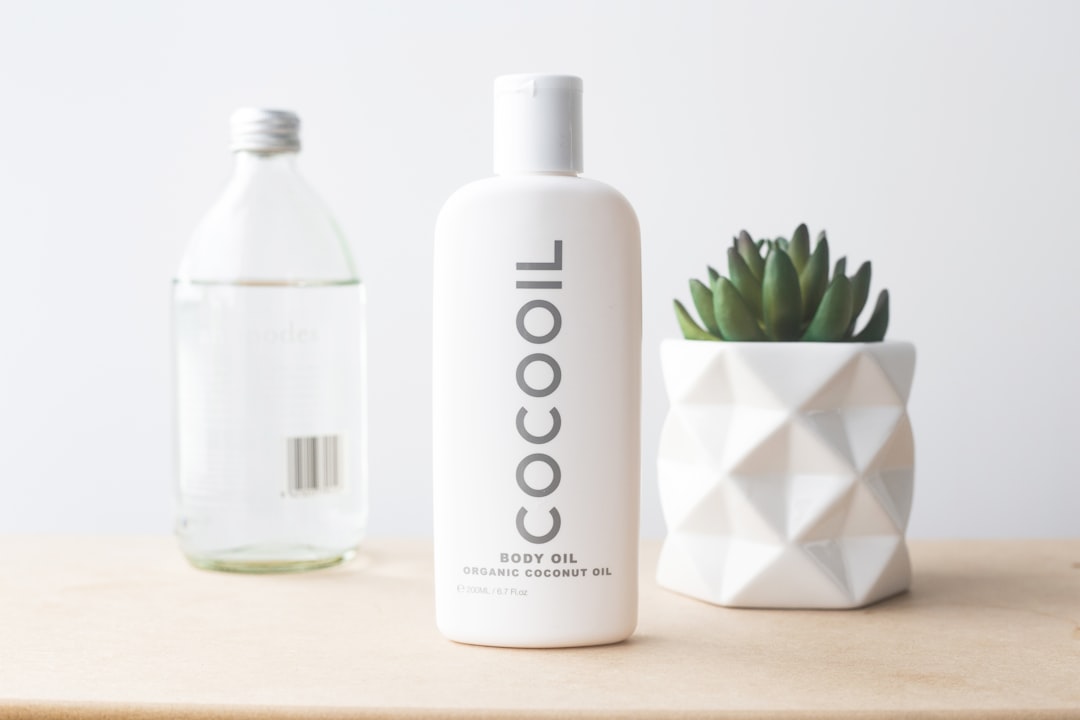Aftercare is a crucial component of any cosmetic or medical procedure, and understanding its significance can greatly enhance your overall experience and results. When you undergo a treatment, whether it’s a cosmetic procedure like laser therapy or a medical intervention, your skin needs time to heal and recover. This is where aftercare comes into play.
It’s not just a set of instructions to follow; it’s a roadmap to ensure that you achieve the best possible outcome. By prioritizing aftercare, you are actively participating in your healing process, which can lead to improved results and a more satisfying experience. Moreover, neglecting aftercare can lead to complications, such as infections or prolonged healing times.
Your skin is sensitive after a procedure, and it requires special attention to avoid adverse reactions. By understanding the importance of aftercare, you empower yourself to take control of your recovery. This knowledge allows you to make informed decisions about your post-treatment routine, ensuring that you protect your investment in your appearance and well-being.
Remember, the time and effort you put into aftercare can significantly influence the final results of your treatment.
Key Takeaways
- Aftercare is crucial for the success and longevity of any skin treatment.
- Managing discomfort and side effects is important for a smooth recovery process.
- Protecting treated areas from sun exposure is essential to prevent damage and maintain results.
- Avoiding certain activities and products can help prevent complications and ensure optimal healing.
- Keeping the skin hydrated and moisturized is key for maintaining healthy and glowing skin post-treatment.
Managing Discomfort and Side Effects
Experiencing discomfort or side effects after a procedure is common, but managing these sensations effectively can make a significant difference in your recovery journey. You may find that mild swelling, redness, or tenderness occurs in the treated areas. It’s essential to recognize that these symptoms are often temporary and part of the healing process.
To alleviate discomfort, consider using cold compresses or ice packs on the affected areas. This can help reduce swelling and provide soothing relief. Additionally, over-the-counter pain relievers may be beneficial, but always consult with your healthcare provider before taking any medication.
In some cases, side effects may be more pronounced, leading to anxiety about your recovery. It’s important to stay informed about what to expect and when to seek help. Keeping an open line of communication with your healthcare provider can alleviate concerns and provide reassurance.
They can guide you on what is normal and what may require further attention. By actively managing discomfort and side effects, you can create a more comfortable recovery experience and focus on enjoying the results of your treatment.
Protecting Treated Areas from Sun Exposure

One of the most critical aspects of aftercare is protecting treated areas from sun exposure. Your skin is particularly vulnerable after a procedure, making it essential to shield it from harmful UV rays. Sun exposure can lead to complications such as hyperpigmentation or delayed healing, which can compromise the results you worked hard to achieve.
To protect your skin, consider wearing broad-spectrum sunscreen with an SPF of 30 or higher whenever you step outside. Reapply every two hours, especially if you’re sweating or swimming. In addition to sunscreen, wearing protective clothing can further safeguard your skin from the sun’s harmful rays.
A wide-brimmed hat or UV-blocking sunglasses can provide additional protection for your face and eyes. If possible, try to avoid direct sunlight during peak hours when UV radiation is strongest. By taking these precautions seriously, you not only protect your skin but also enhance the longevity of your treatment results.
Remember that diligent sun protection is an investment in your skin’s health and appearance.
Avoiding Certain Activities and Products
| Activity/Product | Reason for Avoidance | Alternative |
|---|---|---|
| Smoking | Health risks and secondhand smoke | Nicotine patches, gum, or therapy |
| Processed Foods | High in preservatives and additives | Fresh fruits, vegetables, and whole grains |
| Alcohol | Health risks and addiction | Non-alcoholic beverages or moderation |
| Plastic Bags | Environmental impact | Reusable cloth bags |
After undergoing a cosmetic or medical procedure, it’s vital to avoid specific activities and products that could hinder your recovery. High-impact exercises, for instance, may exacerbate swelling or discomfort in treated areas. It’s advisable to refrain from strenuous workouts for at least a few days post-treatment.
In addition to physical activities, certain skincare products should also be avoided during your recovery period.
Harsh exfoliants, retinoids, or products containing alcohol can irritate sensitive skin and disrupt the healing process. Stick to gentle cleansers and moisturizers that are specifically formulated for post-procedure care. Your healthcare provider may recommend specific products that are safe for use during this time.
By being mindful of what you expose your skin to, you can create an optimal environment for healing and ensure that your results are as beautiful as possible.
Keeping the Skin Hydrated and Moisturized
Hydration plays a pivotal role in the healing process following any cosmetic or medical treatment. Keeping your skin well-hydrated helps maintain its elasticity and promotes faster recovery. Drinking plenty of water is essential; aim for at least eight glasses a day to support overall hydration levels.
Additionally, consider incorporating hydrating foods into your diet, such as fruits and vegetables with high water content. In conjunction with internal hydration, external moisturization is equally important. Applying a gentle moisturizer can help soothe dry or irritated skin while creating a protective barrier against environmental factors.
Look for products that contain soothing ingredients like hyaluronic acid or aloe vera, which can provide relief and promote healing. Regularly moisturizing not only enhances comfort but also contributes to achieving a radiant complexion post-treatment. By prioritizing hydration both inside and out, you set the stage for optimal recovery.
Monitoring the Progress and Following Up with Touch-Up Sessions
Monitoring your progress after a procedure is essential for ensuring that everything is healing as expected. Keep an eye on any changes in the treated areas and take note of how your skin responds over time. Documenting your recovery journey through photos can be helpful in tracking improvements and identifying any concerns that may arise.
If you notice anything unusual—such as excessive redness, swelling that doesn’t subside, or signs of infection—don’t hesitate to reach out to your healthcare provider for guidance. In some cases, touch-up sessions may be recommended to enhance or maintain the results of your initial treatment. These follow-up appointments allow your provider to assess your progress and make any necessary adjustments to ensure optimal outcomes.
Staying proactive about follow-ups demonstrates your commitment to achieving the best possible results from your treatment. By monitoring your progress and being open to touch-ups when needed, you can enjoy long-lasting benefits from your investment in self-care.
Practicing Good Skin Care Habits
Establishing good skincare habits is vital for maintaining the health and appearance of your skin long after the initial recovery period has ended. Incorporating a consistent skincare routine tailored to your skin type will help keep it nourished and protected. Start with gentle cleansing twice daily to remove impurities without stripping away natural oils.
Follow up with serums or treatments that address specific concerns such as hydration or anti-aging. Additionally, don’t forget the importance of regular exfoliation—though be cautious not to overdo it immediately after treatment. Gentle exfoliation helps remove dead skin cells and promotes cell turnover, leading to a brighter complexion over time.
Always remember to listen to your skin; if it feels irritated or sensitive, adjust your routine accordingly. By practicing good skincare habits consistently, you’ll not only maintain the results of your treatment but also promote overall skin health for years to come.
Seeking Professional Advice and Guidance
Finally, seeking professional advice and guidance throughout your recovery journey is paramount for achieving optimal results. Your healthcare provider is an invaluable resource who can offer personalized recommendations based on your unique needs and circumstances. Don’t hesitate to ask questions about any aspect of your aftercare routine—whether it’s about managing discomfort, product recommendations, or lifestyle adjustments.
Additionally, consider scheduling regular check-ins with your provider even after the initial recovery period has passed. These appointments allow for ongoing assessment of your skin’s health and any adjustments needed in your skincare regimen. Remember that professional guidance is not just about addressing concerns; it’s also about celebrating progress and ensuring that you feel confident in the care you’re providing for yourself.
By prioritizing professional advice throughout your journey, you empower yourself with knowledge and support that enhances both your experience and results. In conclusion, aftercare is an integral part of any cosmetic or medical procedure that should not be overlooked. By understanding its importance and following best practices for managing discomfort, protecting treated areas from sun exposure, avoiding certain activities and products, keeping skin hydrated, monitoring progress, practicing good skincare habits, and seeking professional guidance, you set yourself up for success in achieving beautiful results that last long into the future.
Your commitment to aftercare reflects not only on the quality of care you receive but also on how much you value yourself and your well-being.
For more information on laser hair removal aftercare instructions, check out this helpful article on inlaserhairremoval.com. This article provides detailed tips and guidelines on how to properly care for your skin after undergoing laser hair removal treatment. It covers topics such as avoiding sun exposure, using gentle skincare products, and staying hydrated to promote healing and reduce the risk of complications. Be sure to follow these aftercare instructions to ensure the best results from your laser hair removal treatment.
FAQs
What is laser hair removal aftercare?
Laser hair removal aftercare refers to the steps and precautions that should be taken after undergoing a laser hair removal treatment to ensure proper healing and optimal results.
Why is laser hair removal aftercare important?
Laser hair removal aftercare is important to minimize the risk of complications such as skin irritation, redness, and swelling. It also helps to promote the best possible results from the treatment.
What are some common laser hair removal aftercare instructions?
Common laser hair removal aftercare instructions may include avoiding sun exposure, using gentle skincare products, avoiding hot showers and baths, and avoiding activities that may cause excessive sweating.
How long should I follow laser hair removal aftercare instructions?
It is recommended to follow laser hair removal aftercare instructions for at least 1-2 weeks after each treatment, or as advised by your healthcare provider.
Are there any specific products I should avoid after laser hair removal?
It is recommended to avoid using harsh skincare products, exfoliants, and perfumed lotions on the treated area after laser hair removal.
Can I shave or wax after laser hair removal?
It is generally advised to avoid shaving or waxing the treated area between laser hair removal sessions to allow the hair to fall out naturally. Your healthcare provider will provide specific instructions based on your individual treatment plan.






